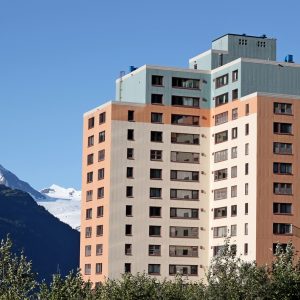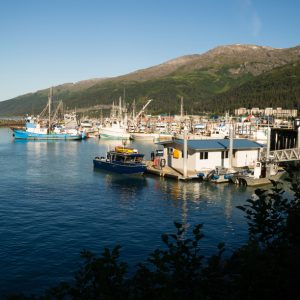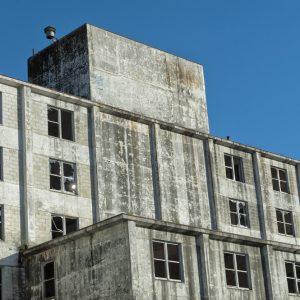The only way to enter the main town of Whittier is an unbelievably long, single tunnel, and surprisingly, that’s the only way to exit. Whittier is situated near the Passage Canal in the American state of Alaska. According to the 2000 census, the population of the city was estimated to be around 182, which has crept higher to 220 in 2010. As per the recent census, Whittier’s total population has been calculated at 214, nearly all of whom reside in a building named Begich Towers, which is an army barrack built during the Cold War era.
Welcome To Begich Towers

The residents of Begich Towers welcome all to come and have a look at how life takes its own course in that magnificent one-structure town. You have to pass through a 2.5-mile long tunnel to set your foot into Whittier. When the direction of travel is switched every half an hour, the tunnel becomes your way to drive out of the town. Driving through this tunnel might make you feel claustrophobic, and by the time you reach to its end, a sight of a lifetime opens its arms to embrace you.
Whittier’s Architecture: Begich and Buckner

A host of other buildings dot the Whittier landscape. There is a military gymnasium which is currently used as a boat storage. There is an inn or two which function as a bar, a restaurant, and even a laundromat. But, the brightly colored Begich Towers remains as the centerpiece of the entire town as it is home to almost all of Whittier. The 14-storey Begich Towers neared its completion in 1957 and boasts of nearly 150 two and three-bedroom apartments. At that time, civil service officers and dependent families were shifted to this condominium. The Whitter School could be reached by a tunnel near the west tower which enabled students to have safe access on days of an inclement weather. It was previously named as Hodge Building in honor of Colonel Walter William Hodge.
The Buckner Building

Aside from the Begich, the Buckner Building is the other main structure in Whittier. Its erection was complete by 1953 and was originally called the city under one roof. In due course of time, the Buckner Building was abandoned. In its place, the Begich was converted into a condominium which houses the lion’s share of the town’s residents. Within the building, you can get access to a police station, a clinic, a church, a grocery store, a convenience store, a school, and other municipal essentials. The Anton Anderson Memorial Tunnel was erected in 1943 and was basically designed for trains. The tracks were supposed to carry all the basic supplies from the remote and protected areas of the town into Bear Valley. Sixty years hence, the space that was whittled through Maynard Mountain remains the longest rail and highway tunnel in the entirety of North America.
History
A glacier near the town was named in honor of John Greenleaf Whittier, a renowned American poet, in 1915, and eventually, the town came to be known by the same name. During crucial times of the Second World War, the U.S. Army built up a military facility with a railroad and a port and named it Camp Sullivan. The projection from the Alaska railroad to the military facility was concluded in 1943, and the port went on to become the entry point for American soldiers into the state of Alaska.
Access To Whittier

Reaching Whittier has been made easy through various transportation modes. The harbor and a deepwater port can be used through the Alaskan Marine Highway. You have the Whittier airport, which is an airfield with a runaway designated for one aircraft at a time. Unfortunately, the runway is not at all accessible during the winter season. Previously, the runway was nearly 500 feet longer than what it’s today but was severely damaged by the earthquake that occurred on a Good Friday in 1964.
Rail Connection
Whittier happens to be Alaska Rail’s link to the Canadian rail systems and other 48 states. The Whitter tunnel or the Anton Anderson Memorial tunnel is the only land access to Whittier. It connects the Seward Highway to the main town and stands at 13,300 feet above sea level.
The scarcity of infrastructure and isolation from the rest of the country has proved to be the basic USP of the town. It’s unbelievable! Every individual living here has a role to play. Everyone living here works as a member of a large close-knit family living under one single roof. That itself makes this small town a must visit. What do you think?





